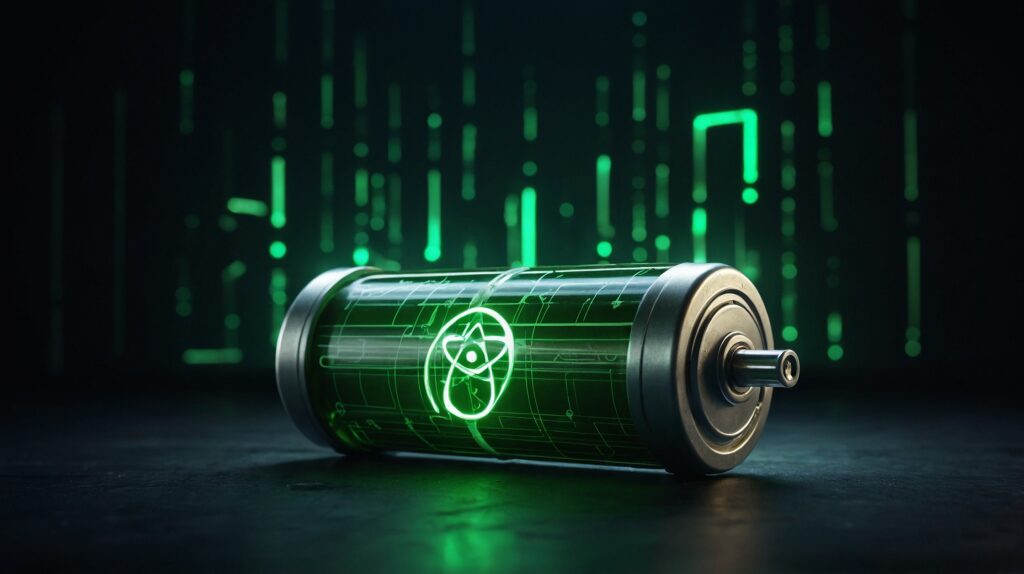
In a groundbreaking development that could reshape the landscape of long-lasting power sources, researchers have unveiled a new design for a nuclear battery that harnesses the energy from radioactive decay. This innovative approach not only promises to deliver power for decades but also offers a solution to the perennial issue of nuclear waste management.
The Power of Americium
At the heart of this revolutionary design lies americium, an element typically relegated to the category of nuclear waste. However, in the hands of a research team led by Shuao Wang at Soochow University in China, this radioactive material has found a new purpose. By embedding americium in a specially designed polymer crystal, the researchers have created a power source that could potentially operate for several decades.
How It Works
The magic happens in three key steps:
- Americium, embedded in a polymer crystal, emits alpha particles.
- The crystal converts this energy into a sustained green glow.
- A thin photovoltaic cell transforms this light into electricity.
All of this occurs within a minuscule quartz cell measuring just millimeters in size, making it ideal for applications where space is at a premium.
Unprecedented Efficiency
What sets this design apart is its remarkable efficiency. The research team reports an improvement in efficiency by a factor of 8000 compared to previous nuclear battery designs. This leap forward brings us closer than ever to realizing the long-held dream of harnessing radioactive decay for practical power generation.
Challenges and Limitations
Despite its promise, this technology is not without challenges. The power output, while stable and long-lasting, is still relatively low. To put it in perspective, it would take a staggering 40 billion of these tiny batteries to power a single 60-watt light bulb. Additionally, the use of radioactive materials presents inherent safety concerns that must be addressed before widespread adoption can be considered.
Looking to the Future
The researchers are not resting on their laurels. Work is already underway to further improve the efficiency and power output of the design. They’re also focusing on making the technology safer and easier to use, crucial steps for any potential commercial applications.

Potential Applications
While we might not see these batteries in our smartphones anytime soon, they could be game-changers in specific fields:
- Deep-sea exploration
- Space missions
- Remote monitoring stations
- Miniature sensors in challenging environments
In these scenarios, where replacing batteries is impractical or impossible, a power source that can last for decades could be invaluable.
Conclusion
This new nuclear battery design represents a significant step forward in our quest for long-lasting, efficient power sources. By turning nuclear waste into a valuable resource, it also offers an innovative approach to a persistent environmental challenge. While there are still hurdles to overcome, the potential applications of this technology are truly exciting. As research continues, we may be looking at a future where the phrase “batteries not included” becomes a relic of the past.
